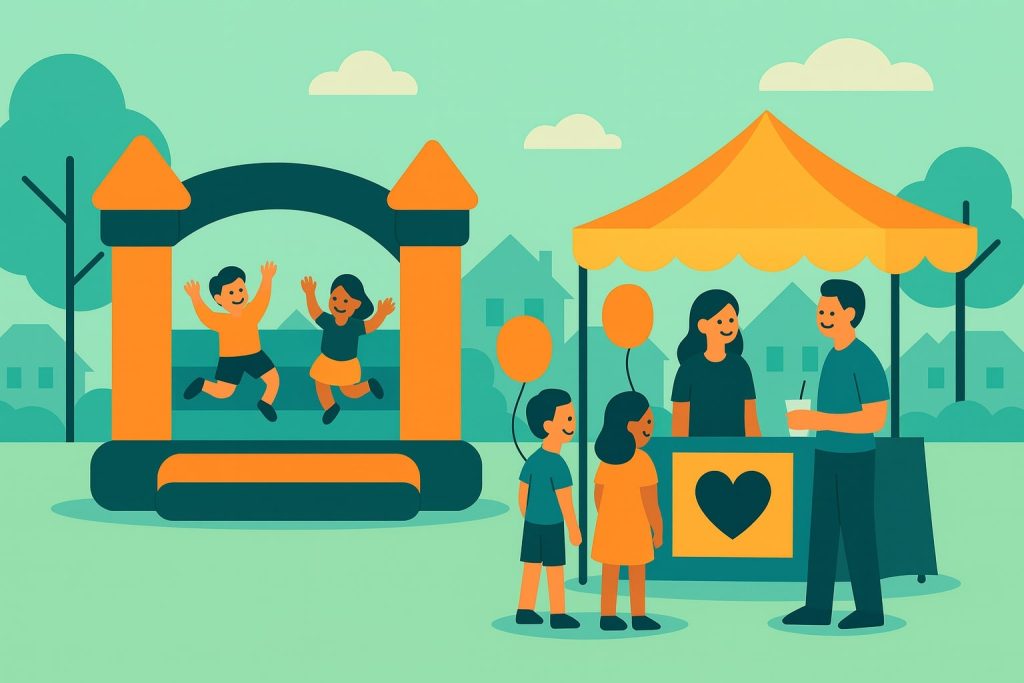
At ZipSprout, one of our catchphrases is “Welcome to the Neighborhood.” We are on a mission to dive into each city we cover and meet the neighbors just like a true local. If your neighborhood is in any way similar to mine, you know a great number of folks who are not native English speakers. I bet a large number of them are Spanish speakers, since people of Hispanic origin are the nation’s largest ethnic minority. For this reason, the ZipSprout team created a project that dipped into the Spanish-speaking niche of our melting pot to uncover local marketing opportunities among this community.
Why should brands want to learn about Spanish speakers? Well, the most recent US census in 2010 recorded 55 million Hispanics. Currently, Hispanics constitute 17% of the total US population and by 2060 will represent 29% of US population, ranging in numbers of 119 million(1). This is and will be good sized market for any brand.
Brands and companies have established all kinds of strategies at a national level to reach Latinos, like the Total Toyota Campaign or the McDonald’s Latinoamericana burger.
But what about a local strategy? How can brands reach Latinos in target cities? This is where ZipSprout shines. We wanted to find local organizations that were already reaching Hispanics, so we did a web search, using the Citation Labs Link Prospector, and qualified our results down to 94 local, Spanish-First community organizations. Then we said “Hola!”
Our Spanish-First Outreach Project
And we also said Hello! Our outreach was done with a template written in Spanish and translated into English, since in our experience, nonprofit directors and staff are bilingual. While the organizations responded to emails exclusively in English, the majority of teleconferences were conducted in Spanish. We spoke with representatives and officials from organizations including:
- La Coalicion Latinoamericana based in Charlotte, NC. (April 15, 2016)
- NC Society of Hispanic Professionals, in Raleigh, NC. (April 18 and May 2 2016)
- Escuela de Futbol Rayados located in Waller, TX. (April 20, 2016).
Our response rate from nonprofits to our initial email was 11.28%. This is significantly lower than our average ZipSprout response rate (traditionally around 50%). We found that the most engaged organizations were those assisting Latino communities in states such as North Carolina where the infrastructure is not meeting the demands of a rapidly growing minority. Organizations from California constituted a 16% of the 94 organizations we reached out to, while North Carolina organizations comprised 10%. However, California nonprofits constituted 8.3% of our responses in contrast with North Carolina organizations which comprised 41%.
Issue of Highest Concern for Nonprofits targeting Hispanics

During my conversations with these organizations, we learned that literacy is of great concern to nonprofits working with Hispanics (2). This interest is especially common among North Carolina’s Spanish-speaking immigrants.
Although it’s not a border state, North Carolina has one of the fastest growing Latino populations in the country (see the chart to the left for more info). And 34% of NC Hispanics speak English poorly or not at all. At this rate of growth and Spanish-speaking saturation, there are significant opportunities for brands wanting to market in Spanish First campaigns. States in the US that share the same characteristics, with relatively new (2 generations or fewer) Latino populations, include Alabama, South Carolina, Virginia, and Georgia.
Understanding the Hispanic Market
So yes, Latinos are a large slice of the American pie, but the Hispanic community is a melting pot in itself, with individuals from 20 different countries, 6 dependant territories and cultures such as Pre-columbian, European, African, Chinese, Indian, Filipino and Japanese. The commonalities between Latin American subgroups are often debated by scholars and sociologists.But there are shared connections – the Spanish language and traditionally strong family relationships.
Hispanic families with a presence in the US for more than 2 or 3 generations have generally become assimilated with American culture. They may retain a connection with their cultural heritage and their background continues to be a major axis in their lives, but it is no longer a definitive factor in their purchase decisions. According to local organization leaders I spoke with, Hispanics who have assimilated continue to be a bridge between the host culture and their relatives, which is why bilingual outreach is most important.
This made me very curious. Being First Generation Hispanic myself and having children who are growing up assimilated, I wanted to learn more. So, I reached out to professionals with experience working with Hispanics in North Carolina and interviewed Gustavo Bernal, Sr. Marketing Advisor at Blue Cross and Blue Shield of North Carolina, who has been working exclusively with the Hispanic community in the state in the last three years. I wanted to pick his brain and learn how a big brand does “local” and “Hispanics.”

“Hispanics who have recently arrived (first generation) in the country have generally a lower education level, are not technologically savvy and prefer traditional media outlets such as radio, TV and newspapers in Spanish,” Gustavo said. He added that brands and companies wanting to promote their products and services can target this population placing ads in traditional media.
There is one big exception to this trend. Although first generation Hispanics may not be generally computer savvy, handheld technology has facilitated access to the internet for Hispanics. For Latinos whose jobs don’t require sitting at a computer or don’t have a desktop at home, mobile technology has opened their access to the world wide web. “Hispanics are doing mobile searches as well,” Gustavo said.
Mi familia+mi barrio+mi iglesia = Hyperlocal marketing opportunities
Based on my conversations with Spanish-speaking community organizations, I learned that the Latino community relies heavily on word-of-mouth referrals and is highly connected locally with churches and religious organizations. These channels provide excellent opportunities for brand placement. Often, Hispanics organize their own community activities without nonprofit intervention, which makes outreach difficult for outsider organizations. Within church groups and religious organizations, brands can more easily identify community leaders and partner with hyperlocal community activities.
By emphasizing word-of-mouth brand referral, brands will have increased visibility within the Hispanic community. “Engaging with Hispanics one-on-one is key to get a good referral,” Gustavo said.

Considering that many first generation Hispanics are less Internet reliant, many rely on swag to remind them to engage with a product or service of interest. Therefore, branding through promotional items are key when marketing to first generation Hispanics. “Marketing strategies that align best with the Latinos in North Carolina are things they can take along with them during an event ,” said Tony Arreaza, Cultural Events Director from the Latin American Coalition in Charlotte, NC.
Consequently, to really make a mark on this community, it is most important to have a physical presence with a table or a booth in large community events. Latino days and community festivals are the preferred delivery method for brands and nonprofits targeting the Hispanic community. “Hispanics want to hear what the product, service or brand is about from a person,” said Cecilia Pepper, from Scholar Latino Initiative at UNC. Cecilia has experience working with the local Hispanic community in Durham, NC as a member of a non-profit and as a brand ambassador for targeting Latinos.
Going Local: Key Opportunities in My Neighborhood
What if a brand wants to target the full spectrum of the Hispanic community in a particular city? During my research I discovered the value of isolating key opportunities in, you guessed it, my own neighborhood. The Raleigh-Durham region of NC has large a concentration of Latinos (36,893 Hispanics in Durham County and 92,649 in Wake County)(4).
While the specific organizations below are unique to my backyard, they represent possibilities across the US.
Nonprofits such as the NC Society of Hispanic Professionals serve as a bridge between two different subgroups within the Latino community: the professionals (technologically savvy, with economic means, bilingual) and the less educated (not technologically savvy, lower income, Spanish-speaking only). As a civic association with a presence in North Carolina for 17 years, this networking opportunity is valuable for any individual or organization looking to make an impression with local Latino community.
 The Society’s mission is to promote education as a way to improve economic conditions for Latino families. It targets youth in middle school and high school by awarding grants and scholarships to help support their education with a goal of encouraging high school completion and bettering workforce options for local Latinos.
The Society’s mission is to promote education as a way to improve economic conditions for Latino families. It targets youth in middle school and high school by awarding grants and scholarships to help support their education with a goal of encouraging high school completion and bettering workforce options for local Latinos.
Neyra Toledo, the Executive Director of NC Society of Hispanic Professionals described the Society’s work as “holistic and integrative, bringing together the combined efforts of families, media and students to keep Latino youth in school and to build a professional path.” This type of organization brings “the two worlds” within the Hispanic Community together. Brands can impact both sides of the spectrum while investing in future Hispanic consumers.
Organizations such as this one are highly active, engaged and promised to continue their operations since the Latinos also continue to increase in numbers.
To find these organizations successfully from a Google search, we suggest keywords such as: intitle:“association” intitle:“Hispanics” intitle:“professionals” (and their Spanish equivalents)+ the target city.
Other Civic Associations
 Immigrants from an specific country who are living and working in the United States also represent key target customers for some brands, especially those looking for temporary expats in the US. In some cases, a nonprofit doesn’t serve Hispanics but they do serve Spanish-speakers such as Casa de España Dallas-Fort Worth. This is a group of nationals from Spain that provides new spaniard immigrants initial contact information and networking opportunities, while keeping their cultural bond with their country of origin. These niches can be very helpful for brands and product placement because they often have community events that attract a large number of people interested in learning about their culture, gastronomy and language. These groups are perceived as “authentic” because they have maintained their cultural heritage and bond with their motherland.
Immigrants from an specific country who are living and working in the United States also represent key target customers for some brands, especially those looking for temporary expats in the US. In some cases, a nonprofit doesn’t serve Hispanics but they do serve Spanish-speakers such as Casa de España Dallas-Fort Worth. This is a group of nationals from Spain that provides new spaniard immigrants initial contact information and networking opportunities, while keeping their cultural bond with their country of origin. These niches can be very helpful for brands and product placement because they often have community events that attract a large number of people interested in learning about their culture, gastronomy and language. These groups are perceived as “authentic” because they have maintained their cultural heritage and bond with their motherland.
Mi Casa, es su casa
Brands, do you want to make Hispanic homes your home? Understanding this diverse and fragmented the market is key. The good news: Latinos are reachable, but based on my research, they do require a specific approach:
- Using hyperlocal marketing opportunities is definitely a strategy to look into. Reaching out to Latino social organizers and targeted nonprofits puts any brand in front of hundreds of Latino families. Start building a name for yourself among the Hispanic community.
- Put some boots on the ground. In the aforementioned events, Latinos want to hear about your product or service from someone who speaks Spanish, who will hand them a promotional item to remember you by, and most importantly, who will give a friendly smile and a handshake.
- Partnering with organizations which are working in cities and states with fast growing Latino communities is a great way to find strong engagement opportunities. Institutional efforts are not meeting the Hispanic community’s needs; these nonprofits need sponsors and your brand can be working for a great cause.
- Understanding the importance of interpersonal relationships among Latinos is essential. Hispanic culture in the US emphasizes the group rather than the individual. Purchase decisions are often based on the recommendations of friends and family. A purchase may involve the family or an entire community by way of testimonials, word of mouth, and referrals, all of which are key elements when marketing for Hispanics.
- Go the extra mile by reaching out to nonprofits that organize large community festivals. These festivities are the perfect opportunities for the Hispanic community and brands to cross paths. Gathering with food, music, family activities… what’s not to love?
- Locate key opportunities that will help you reach across the Hispanic community spectrum. Your social contribution will take you a long way. What better way to raise an interest in your brand than by partnering with nonprofits attending the causes most concerning to the Hispanic community?
- Seek out community and social organizers who can help your brand. Finding these niche opportunities from a remote location may be overwhelming, at ZipSprout we specialize in getting these pockets of unexplored possibilities.
________________
(1)U.S. Census Bureau, Hispanic Americans By the Numbers, July 1, 2014.
(2)Krogstad, Jens Manuel, Pew Research Center, Top issue for Hispanics? Hint: It’s not immigration; June 2, 2014.
(3)Pew Research Center, Hispanic Trends, Demographic Profile of Hispanics in North Carolina, 2011. https://www.pewhispanic.org/states/state/nc/
(4)Pew Research Center, Hispanic Trends, Demographic Profile of Hispanics in North Carolina, 2011. https://www.pewhispanic.org/states/state/nc/


